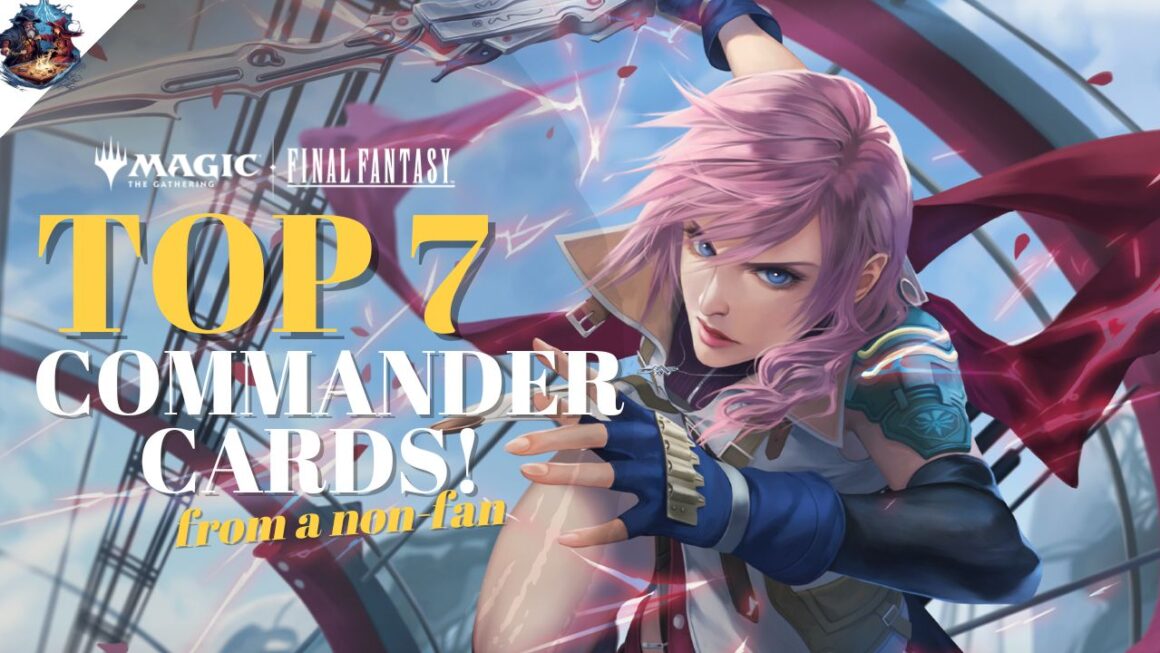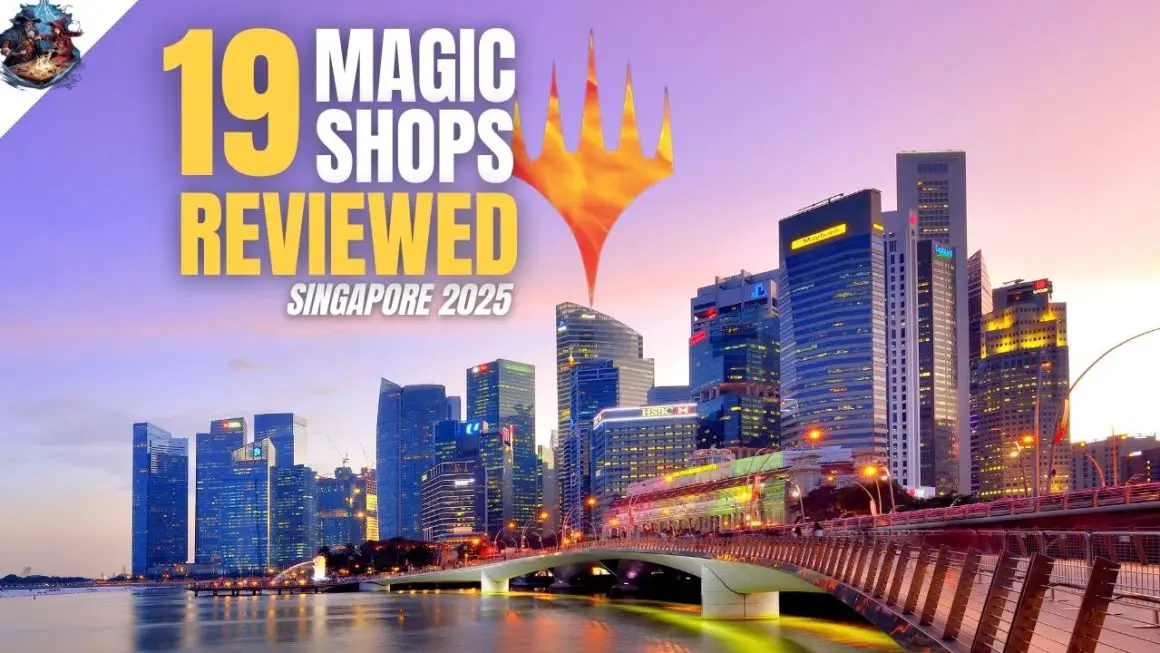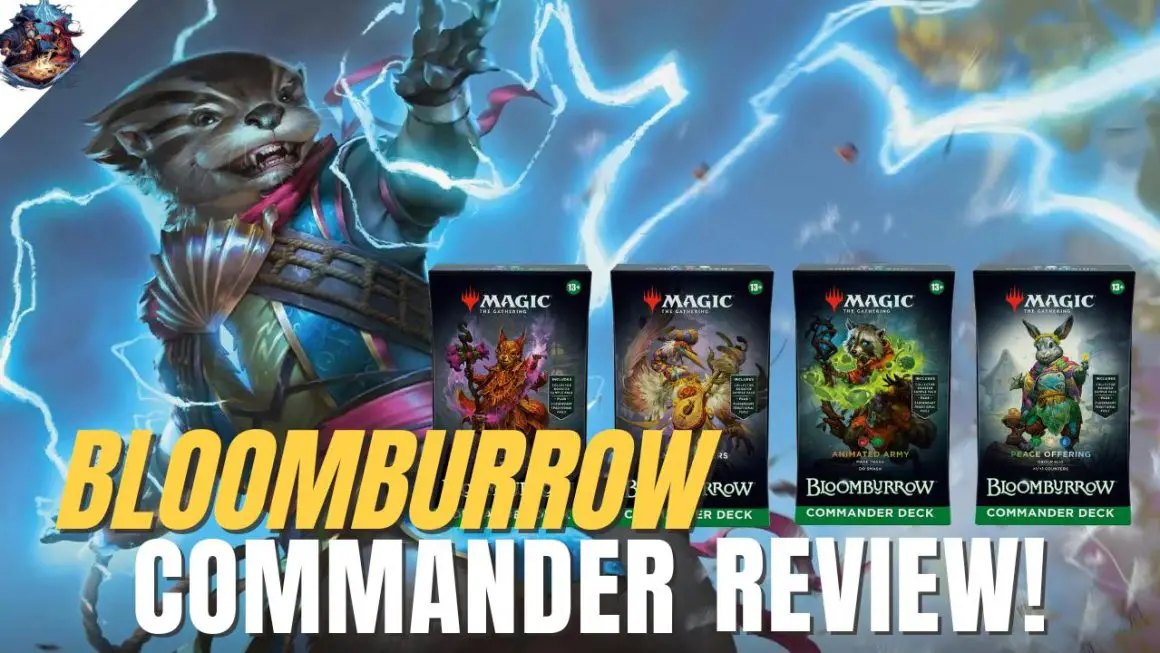Over the weekend, a new cross-platform, Magic-related game was quietly released on both mobile and desktop. Wizards of the Coast’s Spellslingers uses familiar faces from Magic: the Gathering lore to serve as avatars/heroes, likely to provide a soft introduction to Magic without getting into the actual game.
There are also familiar card names like Shivan Dragon, Shock, and Tolarian Academy but some of them have different abilities from the original game.

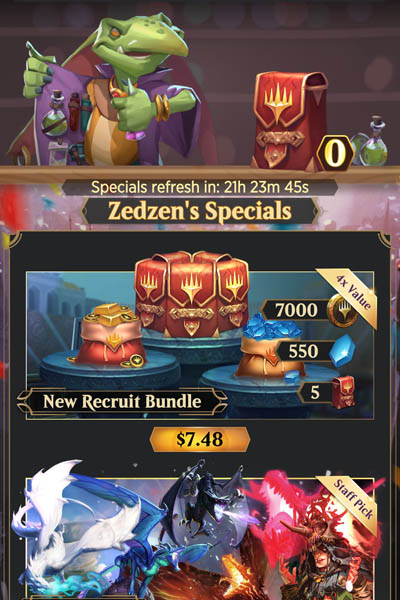
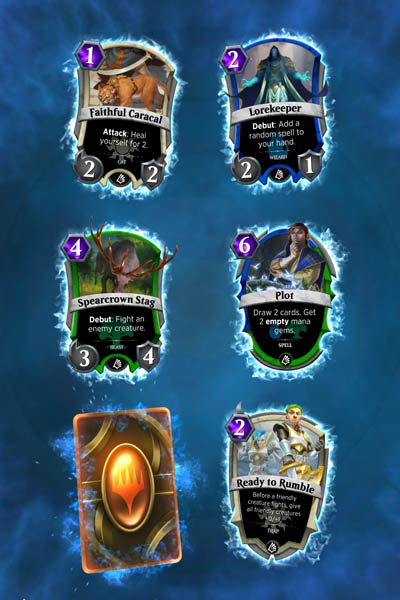
In Spellslingers, the goal is to get your opponent’s life down to 0 by casting spells, attacking and blocking. The game’s layout doesn’t stray from the tried and tested, with daily challenges, events, online store all a touch away from the main menu.
Whether you’re new to Magic or a veteran, there are some key differences from the original game that you should be aware of. But let’s start with the similarities:
Similarities Between Spellslingers and Magic: the Gathering
Power and Toughness
Power and Toughness remain in Spellslingers, which makes combat simple. There are also spells that buffs stats (like Infuriate) and armour (similar to Shield counters), but otherwise the fundamentals of combat still remain the same.

Keywords and Their Functions
Some keywords such as Flying, Haste and Trample have been loyally transported over to Spellslingers. They also function the same way, for example Trample gives the ability to deal any excess damage onto the opponent.

“Enter the Battlefield” effects have been changed to “Debut,” which we found quite apt and precise without actually losing its meaning. In future, we could see more of the basic tier keywords like First Strike and Deathtouch makes it way into Spellslingers.
Colours and Deck Building
Spellslingers also revolves around the 5 colours of Magic, and each has its de facto Planeswalker/hero that fits into the colour’s themes. For black, you have Liliana, and red uses Chandra, for example. Just like the original game, you build your deck by swapping cards in and out. If you’re leaning towards Liliana’s reanimate abilities, then your deck will likely have lots of black cards.

The game does let you put a limited number of cards that are not of your Planeswalker’s colour. We haven’t explored that far yet, but I would assume you can use different coloured Mana to play those spells.
A tab in the menu shows you your card collection, and you can build multiple decks using the same cards. The user interface looks congested on a small mobile screen but should look much better if you’re playing Spellslingers on your dekstop and external monitor.

How is Spellslingers Different from Magic: the Gathering?
For better or worse, Spellslingers changes certain key rules from the original Magic: the Gathering. These could have been done to dumb down the game and not scare new players away too early. That’s the good part of these changes. However, if one should want to graduate from Spellslingers into the actual Magic game on Arena, he or she might be in for a big culture shock.
Here are the key differences we’ve seen so far:
There Is No Tap Ability, and Attacking Creatures Do Not Tap
The biggest omission in Magic Spellslingers from the original game is the Tap (![]() ) symbol and game function. In Magic: the Gathering, many key abilities from Mana, attacking, and activating key abilities uses the Tap function to ensure that their effects are not abused.
) symbol and game function. In Magic: the Gathering, many key abilities from Mana, attacking, and activating key abilities uses the Tap function to ensure that their effects are not abused.
Tapping looks like it is completely omitted from the Spellslingers, meaning attacking Creatures will still be available as blockers (if they survive). It does incentivise blocking whenever you can, otherwise you would be taking damage.
In actual Magic: the Gathering, attacking normally requires you to tap your Creatures, and since tapped Creature cannot block, players have to think twice on whether an all-out attack is beneficial since doing so would leave you defenceless in the counter attack.
No Lands and Automatic Mana Growth
Like many modern card-based games, Mana (or energy) to cast spells and generally do stuff is automatically generated and increased each turn. You start off with 1 Mana on your 1st turn, 2 on your 2nd, and so on and so forth.
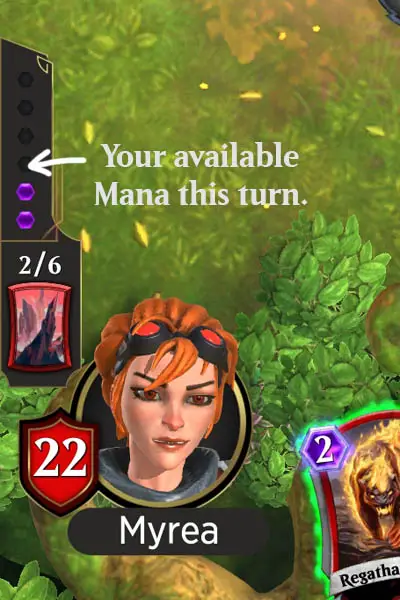
Certain spells can help you add or grow your Mana base, similar to cards in the original Magic: the Gathering game. As you’ve probably already guessed, there are no Land cards in Spellslingers, and that means it deviates significantly from the heart of Magic.
In the original Magic game, Lands are needed to “tap” to generate Mana, and you’ll need to draw such Land cards before playing them. Not only do you have to draw them, there is an element of variance (i.e. luck) because you might end up drawing too few, or too many Lands.
Lands can be one of the most frustrating parts of playing Magic, but its variance allows players to come back from behind, or completely blow out a more experienced player.
No Use of the Stack or Instant Spells
Once again, like many newer games, it looks like spells can only be played on your turn. In the original game, players can respond to any action by any player with their own action, using certain the Stack and Instant spells. In terms of strategy, this requires more deep thought in decision making since a counter to your action could end the game for you.
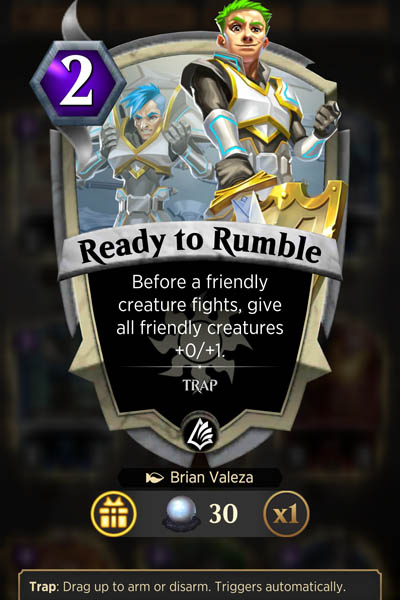
Spellslingers gets rids of that complexity but making sure players do whatever they want on their turn without interruption. The gameplay thus becomes more linear (and in a way predictable). However, there is a card type called Trap that acts as a form of combat trick, and should be able to be used on the opponent’s turn.
Instant could eventually make its way into Spellslingers through expansions or updates, but right now the lack of it keeps the game simple.
Damage and Buffs to Creatures Are Not Reset at End of Turn
One iconic feature of Magic: the Gathering is that Creatures that don’t die in combat regain their health (called Toughness) at the end of each turn. Most Power and Toughness changes in Magic also only last till end of each turn. This doesn’t happen in Spellslingers, as damage and buffs are permanently marked on each Creature.
It does mean that enormously big Creatures don’t get away with ruling the Battlefield, which does often quite a bit in Magic. It also means there are no sacrificial blocks without some loss to the attacker, since whatever damage your blockers deal will still be marked on any Creature that survives.
End Step
It isn’t inherently clear if Spellslingers is meant to introduce the world of Magic to a new generation of players who have never heard of the franchise, or to serve as lite version to have some quick games on mobile.
Removing key elements (tapping, Lands) of what makes Magic: the Gathering unique does make Spellslingers easier to adopt and understand, but it could come back to bite Wizards if these same players want to migrate to MTG Arena or paper Magic and find that the game is totally different.


